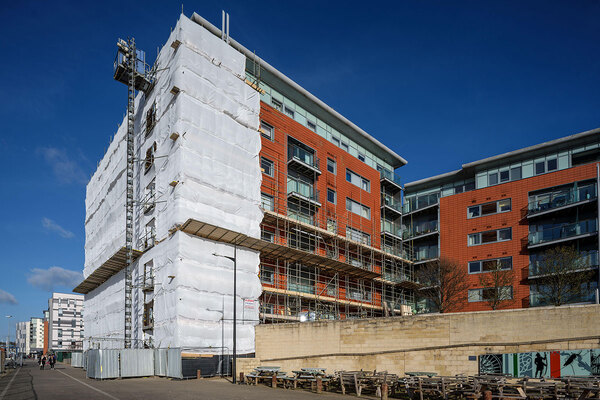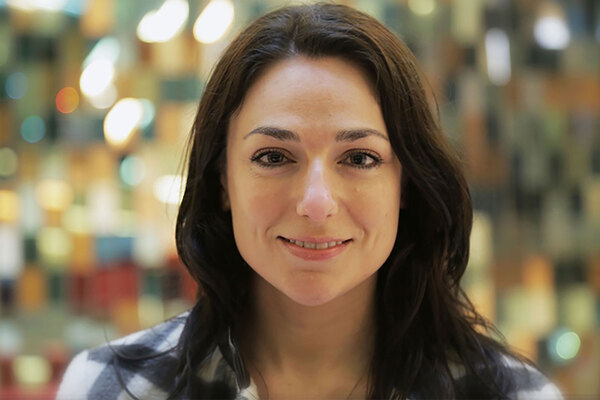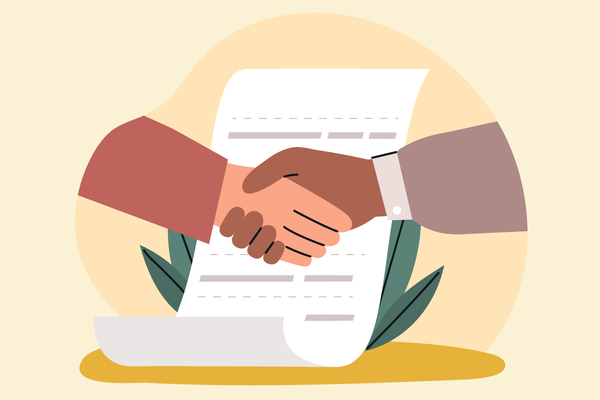Campaigners warn progress on cladding remediation work could be ‘misleading’
Progress towards remediating tower blocks with building safety issues in the UK has been described as “misleading” by a resident campaign group due to the way the government is collecting and publishing the data.
In its latest report on building safety remediation, released last month, the Department for Levelling Up, Housing and Communities (DLUHC) identified 3,839 residential buildings at 11 metres and taller with unsafe cladding.
This is significantly lower than the government’s estimate of 6,220 to 8,890 in May 2022, and could rise given the number if medium-rise buildings not assessed.
The government opened a funding scheme for buildings between 11 and 18 metres in July last year, but progress has been much slower on these blocks.
On top of this, many buildings with identified unsafe cladding may not be in the data at all because developers are yet to carry out a full assessment, warned Jennifer Frame, from the End Our Cladding Scandal campaign group.
She said: “If you’re only showing a very small fraction of the problem, you’re giving a misleading impression of the scale and progress. We would rather see a realistic picture because that’s what’s going to drive the urgency.”
Ms Frame explained that if the true number of unsafe buildings is 10,000, as has been reported, then contrary to the government’s claim that 21% of buildings have had remediations completed, the actual figure would be around 8%.
“What I would like them to say is to publicly say, ‘We’d overestimated before and this is the reason why we’ve revised down our estimate’, but I think it’s just that they’re so slow at getting to recognise and deal with extra categories of problems,” she said.
In July last year, the campaign group delivered a new set of asks to the government after warning that “hardly anything has changed on the ground” a year on from new legislation to protect them from costs.
The government should already have access to a broader scope of data, believes Ms Frame, as developers that signed remediation contracts with DLUHC are obliged to submit quarterly data returns, including target dates for assessments on each building, and for completed remediation works.
“We would like some transparency by them putting these figures out there… then people can be challenging it and comparing developers,” added Ms Frame.
In September 2019, Ms Frame lost her home during a fire at Richmond House in south-west London, which Inside Housing revealed had “defective” cladding following a report published in September 2020.
In just one example of discrepancy in the figures, accounts for Barratt Developments showed it has made provisions for 278 buildings yet to be remediated, while government figures put the number at 128. By only counting buildings that have been 100% assessed, Ms Frame suggested that DLUHC is painting a “completely different vision of the future and what the pace of progress will look like”.
She added: “It is a big data collection exercise, there’s no doubt about that, however we are six-and-a-half years in. If we’re going to invest this much money and if there’s this much left to do, it’s worth paying a bit more attention.
“I’m talking to people every day who are really stuck, who might still be waiting for years, and if we give the impression that this is nearly fixed, that doesn’t help us it actually harms us because it means that nobody’s going to be applying the urgency that’s needed.”
For its part, Barratt explained that the reason for the difference in figures is the method used in calculating “existing” issues. The developer pointed out that it reports on all potential issues, whereas DLUHC reports confirmed issues only.
It added: “We continue to engage with DLUHC regarding the different methodologies to help clarify this going forward. In the meantime our building safety unit is making good progress with its projects and with 96% of stakeholders contacted so far.”
Another person left waiting is Charlotte Meehan, a resident of the Mojo Development in Bow, east London. Her building has been classified as a “priority” by developer Bellway as flammable high-pressure laminate and combustible insulation were discovered in the building. However, her case will not be included in the government’s figures as she is still waiting for an assessment to begin.
Ms Meehan said: “We know it needs to be remediated in some way. We just don’t know what that scope of work looks like and what will be deemed as ‘life critical’ – a very loose term the government introduced into its self-remediation terms which is very much open to interpretation.
“The reality on the ground is that, actually, not a lot as moved forward for people like me.”
Bellway said: “Obviously how the data is presented is one for DLUHC to answer, as it is their data.”
But under its developer remediation contract, Bellway has to provide all of the data about all of the buildings concerned, whether the surveys have been completed, whether remediation is underway, progress to date and the reason for any delays.
As of June last year, the number of volume house builders that have committed to paying for remediation works to blocks they have built under the contract stood at 49.
DLUHC has been approached for a response to the concerns raised by the End Our Cladding Scandal campaign group.
Sign up for our fire safety newsletter
Already have an account? Click here to manage your newsletters












